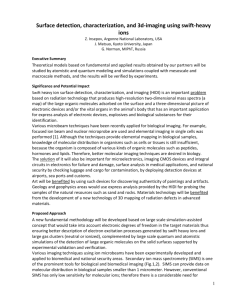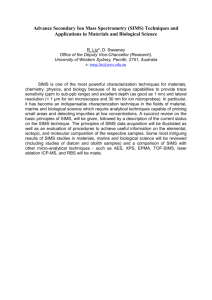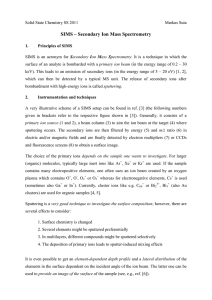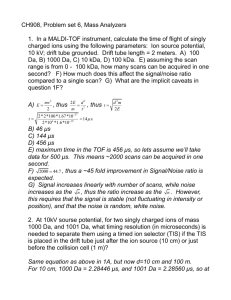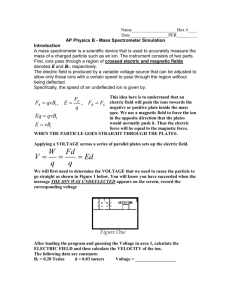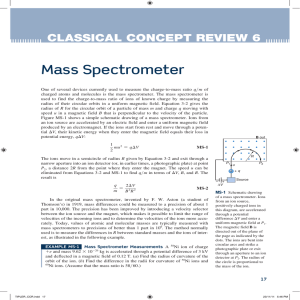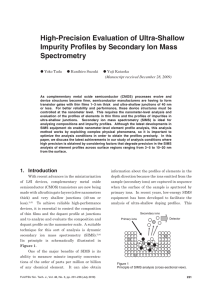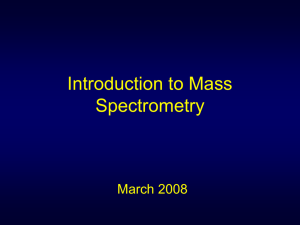CHAPTER: IMPURITY ANALYSIS USING SIMS
advertisement
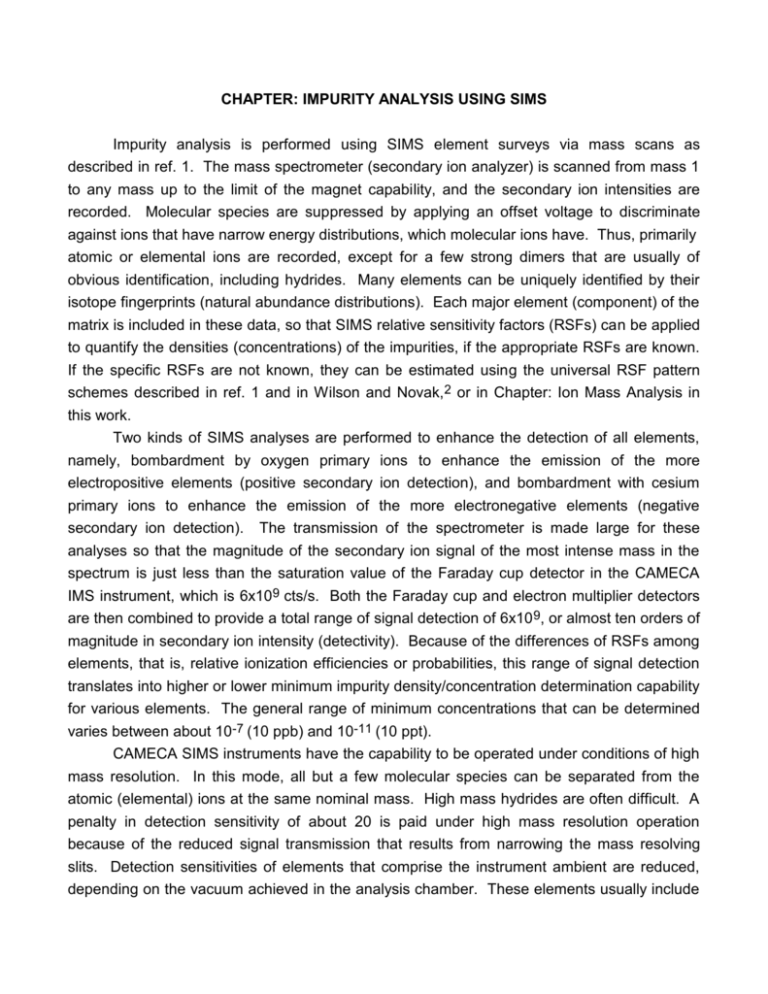
CHAPTER: IMPURITY ANALYSIS USING SIMS Impurity analysis is performed using SIMS element surveys via mass scans as described in ref. 1. The mass spectrometer (secondary ion analyzer) is scanned from mass 1 to any mass up to the limit of the magnet capability, and the secondary ion intensities are recorded. Molecular species are suppressed by applying an offset voltage to discriminate against ions that have narrow energy distributions, which molecular ions have. Thus, primarily atomic or elemental ions are recorded, except for a few strong dimers that are usually of obvious identification, including hydrides. Many elements can be uniquely identified by their isotope fingerprints (natural abundance distributions). Each major element (component) of the matrix is included in these data, so that SIMS relative sensitivity factors (RSFs) can be applied to quantify the densities (concentrations) of the impurities, if the appropriate RSFs are known. If the specific RSFs are not known, they can be estimated using the universal RSF pattern schemes described in ref. 1 and in Wilson and Novak, 2 or in Chapter: Ion Mass Analysis in this work. Two kinds of SIMS analyses are performed to enhance the detection of all elements, namely, bombardment by oxygen primary ions to enhance the emission of the more electropositive elements (positive secondary ion detection), and bombardment with cesium primary ions to enhance the emission of the more electronegative elements (negative secondary ion detection). The transmission of the spectrometer is made large for these analyses so that the magnitude of the secondary ion signal of the most intense mass in the spectrum is just less than the saturation value of the Faraday cup detector in the CAMECA IMS instrument, which is 6x109 cts/s. Both the Faraday cup and electron multiplier detectors are then combined to provide a total range of signal detection of 6x10 9, or almost ten orders of magnitude in secondary ion intensity (detectivity). Because of the differences of RSFs among elements, that is, relative ionization efficiencies or probabilities, this range of signal detection translates into higher or lower minimum impurity density/concentration determination capability for various elements. The general range of minimum concentrations that can be determined varies between about 10-7 (10 ppb) and 10-11 (10 ppt). CAMECA SIMS instruments have the capability to be operated under conditions of high mass resolution. In this mode, all but a few molecular species can be separated from the atomic (elemental) ions at the same nominal mass. High mass hydrides are often difficult. A penalty in detection sensitivity of about 20 is paid under high mass resolution operation because of the reduced signal transmission that results from narrowing the mass resolving slits. Detection sensitivities of elements that comprise the instrument ambient are reduced, depending on the vacuum achieved in the analysis chamber. These elements usually include H, C, N, and O. Detection of elements in the primary beam is also reduced. In the cases described above, these elements are O and Cs. If the O primary ion beam is not mass separated, the detection of masses (elements) that are in the beam may be reduced; such elements in a standard CAMECA instrument are H, N, and Ni (from the intermediate electrode of the duoplasmatron ion source). Other elements that may exhibit backgrounds in mass spectra are those of samples that have recently been sputtered in the instrument. This problem can be greatly reduced by cleaning or replacing the immersion lens cover plate and/or by sputtering the material of present analysis interest to "cover up" atoms of the previously sputtered material (that can be resputtered into the mass spectrometer). Both of these solutions require significant times during which analyses cannot be performed. References 1. R.G. Wilson, F.A. Stevie, and C.W. Magee, Secondary Ion Mass Spectrometry [Wiley, 1989] 2. R.G. Wilson and S.W. Novak, J. Appl. Phys. 69, 466-74 (1991)


